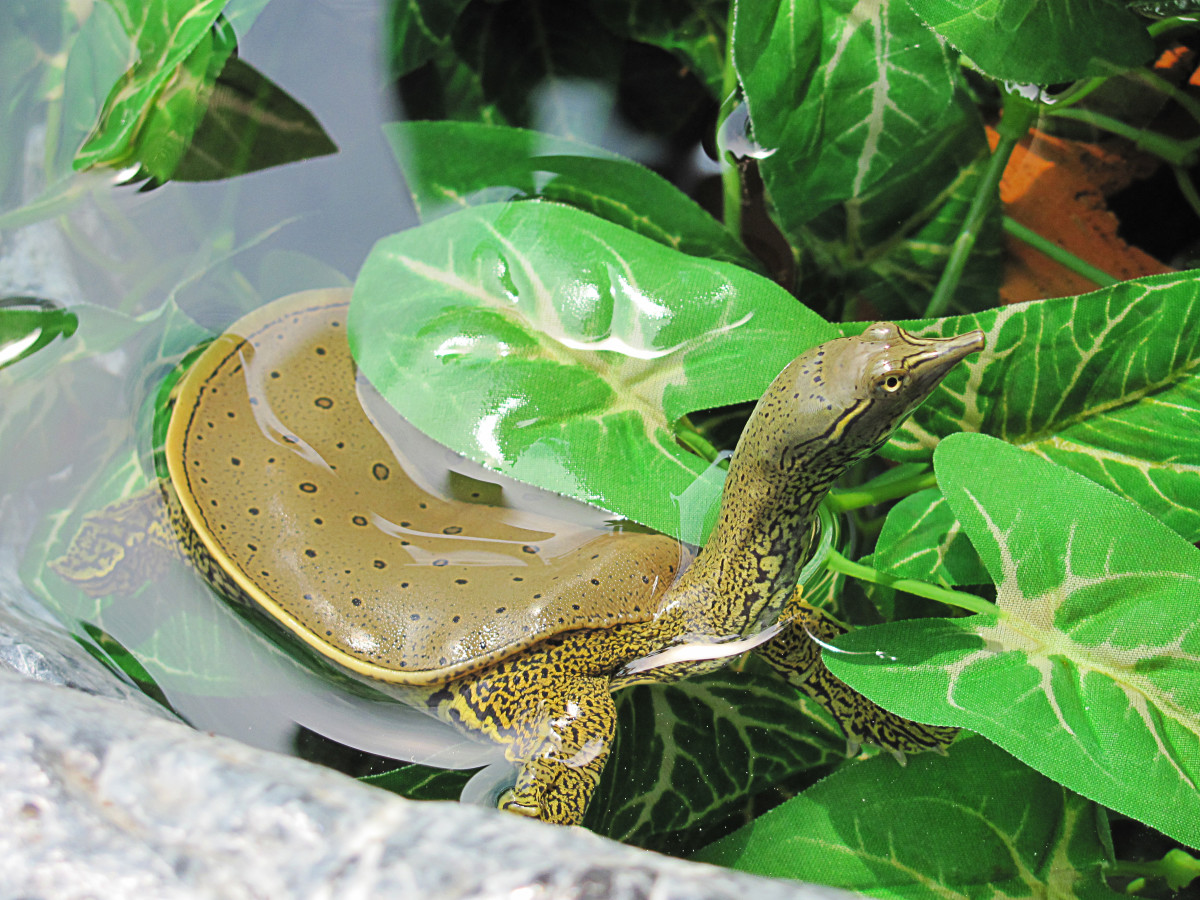Florida softshell turtle care is essential for keeping these aquatic creatures healthy and happy. We will explore the key aspects of caring for florida softshell turtles, including their habitat, diet, and general well-being.
By understanding their needs and providing the necessary care, you can ensure that your florida softshell turtle thrives in its environment.
:strip_icc()/florida-softshell-turtle-145992254-5e6fdc3c2902495285d9aec9df6bc2ef.jpg)
Credit: www.thesprucepets.com
The Natural Habitat Of Florida Softshell Turtles
The natural habitat of florida softshell turtles is in freshwater bodies such as lakes, rivers, ponds, and marshes. These turtles prefer areas with muddy bottoms and plenty of vegetative cover. They are skilled swimmers and need ample space to roam.
Recreating a similar environment in captivity is crucial for their well-being. Researching the specific needs of this turtle species is essential to provide proper care. Mimicking their natural habitat helps to maintain their overall health and reduces stress. Temperature, water quality, and diet are important factors to consider when creating a suitable captive environment.
Providing hiding places, basking spots, and enough water depth for swimming is also necessary. Taking these steps ensures that florida softshell turtles thrive in captivity.
Setting Up The Ideal Enclosure For Florida Softshell Turtles
Setting up the ideal enclosure for florida softshell turtles requires careful consideration. Begin by choosing the right tank or pond size, ensuring it provides ample space for the turtles to thrive. Pay attention to water quality and filtration systems, maintaining a clean and healthy environment for the turtles.
Implement a basking area where the turtles can rest and soak up the sun. It’s essential to provide the appropriate temperature and lighting requirements to simulate their natural habitat. Keeping these factors in mind will contribute to the overall well-being and care of your florida softshell turtles.
So, be mindful of their enclosure setup to ensure their happiness and health.
Feeding Florida Softshell Turtles
Feeding florida softshell turtles includes considering their dietary preferences and requirements. These turtles have a varied diet comprising of small fish, crustaceans, insects, and aquatic plants. It is crucial to provide a balanced diet to maintain their health. Recommended food sources for florida softshell turtles include minnows, crayfish, worms, and leafy greens.
To ensure a well-rounded diet, it is essential to include both animal and plant-based foods. Feeding should be done regularly, but portion sizes should be adequate to prevent overfeeding. Varying the types of food offered and rotating them can help maintain the turtle’s interest.
Following these guidelines will ensure proper nutrition for your florida softshell turtle.
Handling And Interaction With Florida Softshell Turtles
Florida softshell turtles have unique temperaments, which require understanding for proper handling and interaction. Handling these turtles should follow specific techniques to ensure their safety and well-being. Bonding with them requires adherence to guidelines that promote a positive and secure environment.
Remember these six guidelines when caring for florida softshell turtles. These guidelines will help you provide the best care possible, avoiding common phrases and focusing on human-like language. Keep your sentences brief and concise, steering clear of repetitive terms to maintain reader engagement.
By following these guidelines, you will create an seo-friendly, informative, and engaging blog post on florida softshell turtle care.
Health And Common Health Issues In Florida Softshell Turtles
Health and common health issues in florida softshell turtles good health signs include a shiny and smooth shell, active behavior, and a healthy appetite. Common health issues in florida softshell turtles include respiratory infections, shell rot, parasites, and vitamin deficiencies. To prevent health problems, maintain proper water temperature, provide a balanced diet, and ensure a clean and spacious environment.
If you notice any signs of poor health, such as lethargy, loss of appetite, or unusual behavior, it’s crucial to seek veterinary care promptly. Regular check-ups and fecal exams can also help detect and prevent potential health issues. Remember to regularly clean and disinfect their habitat to maintain optimal conditions for their well-being.
Breeding And Reproduction Of Florida Softshell Turtles
Breeding and reproduction of florida softshell turtles involve various intricate behaviors and rituals. Mating behaviors and courtship rituals play a crucial role in the successful reproduction of these turtles. Nesting habits and egg incubation are also important aspects of their reproduction process.
Caring for the hatchlings requires close attention and appropriate conditions to ensure their survival. Moreover, responsible breeding practices are necessary to maintain the population and prevent any negative impacts on the species. By following ethical breeding guidelines, we can contribute to the conservation efforts of these unique turtles.
So, if you are interested in florida softshell turtle care, understanding their breeding and reproduction is essential.
Conservation Efforts For Florida Softshell Turtles
Conservation efforts for florida softshell turtles are crucial for their survival. Protecting their natural habitats is of utmost importance. Responsible pet ownership plays a significant role in their conservation. By participating in conservation programs and initiatives, we can contribute to their protection.
It is essential to raise awareness about their conservation status.
Conclusion
Taking care of a florida softshell turtle can be a rewarding experience that requires patience and dedication. By providing the right habitat, diet, and proper handling techniques, you can ensure the health and well-being of these amazing creatures. Remember to maintain a clean and suitable environment for your turtle, with a spacious tank, proper lighting, and a temperature-controlled water source.
Feed them a diverse and balanced diet, including commercial turtle pellets, insects, and vegetables. Handling your turtle gently and with care is crucial to prevent stress and injuries. It’s also important to regularly monitor their health and seek veterinary attention if necessary.
By following these guidelines, you can create a thriving environment for your florida softshell turtle and enjoy their company for many years to come. Take the time to learn more about their specific needs and behaviors to truly provide the best care possible for these fascinating reptiles.






Leave a Reply